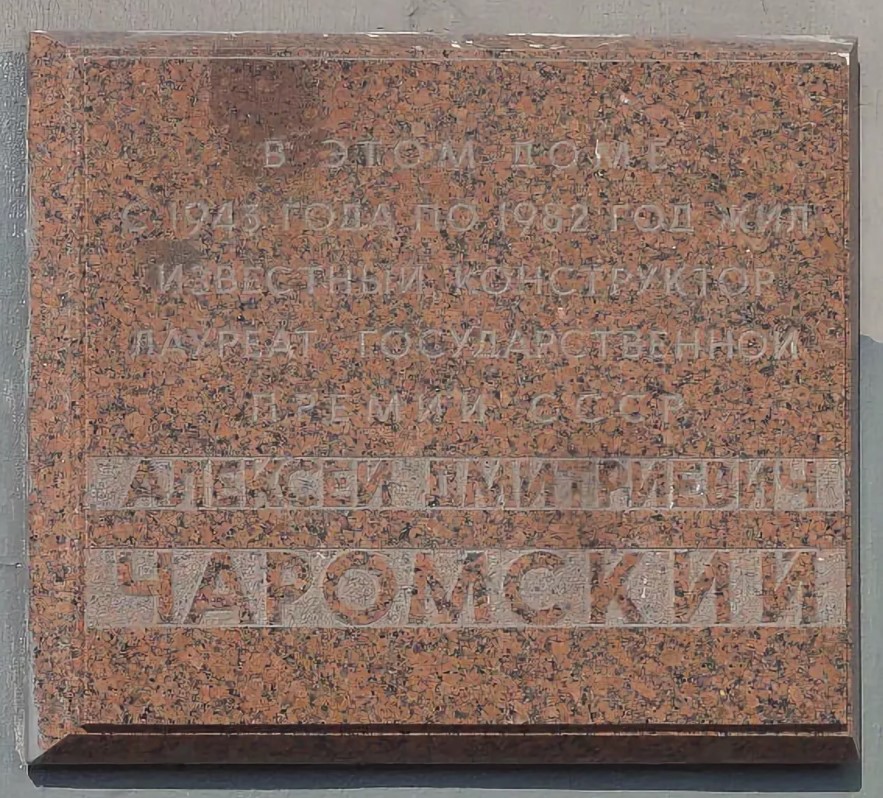Alexey Dmitrievich
Charomsky
1899-1982

Alexey Dmitrievich Charomsky (Boronichev) was a Soviet designer of aviation and tank diesel engines, Major General of the Aviation Engineering Service (1944). He was born in a poor peasant family in the village of Charomskoye, the Cherepovets district, the Novgorod Province (now the Sheksninsky district, the Vologda region). He finished a three-grade parochial school and at the age of 12 left for St. Petersburg, where, with the help of a fellow villager A.A. Filatov, a worker at the Putilov factory, he got a job as an apprentice in a bakery. In 1913, having added a year to his age, he went to the Putilov factory, where he trained as a turner and worked until the beginning of 1918. He received his secondary education in the evening school. In the winter of 1918, he volunteered for the Red Army, took part in the Civil War. In 1923 he entered Zhukovsky Air Force Academy and in 1928 he graduated from it among the first graduates. On the recommendation of the State Examination Commission, Charomsky was sent to the Scientific Automotive Institute (NAMI), where he was soon appointed as the Head of the aviation department. Alexey Dmitrievich Charomsky headed an initiative group of aviation specialists consisting of 19 people, which on August 13, 1930 addressed Joseph Vissarionovich Stalin with a proposal to organize an Institute of aviation engines in the aviation industry system. By the resolution of the Revolutionary Military Council on December 3, 1930, the IAM (the Institute of Aircraft Engines) was organized, renamed CIAM in 1932. At the Institute, Alexey Dmitrievich Charomsky was appointed as the head of the Department of Oil Engines (OND). Together with a group of designers, he began developing projects for an aviation diesel engine and experimental installations for scientific research of the workflow. Alexey Dmitrievich combined the post of the head of the OND with the post of the chief designer of the CIAM. Under the leadership of Charomsky, more than 15 projects of experimental four-stroke and two-stroke diesels of various schemes were carried out. The result of these works was the creation of the AN-1 aviation diesel engine in 1936. The engine had successfully passed state tests and in many respects, including power-to-weight ratio, was ahead of foreign analogues. The main design solutions and the experience of fine-tuning the AN-1 engine were used in the creation of the V-2 tank diesel engine, which found the widest application in tanks and self-propelled artillery installations during the Great Patriotic War. He was convicted and in 1938-1942 was imprisoned, working in the motor group of the special technical bureau of the NKVD. In 1942-1960 he was the chief designer at various factories.
Address: Moscow, Leningradsky ave., 58

